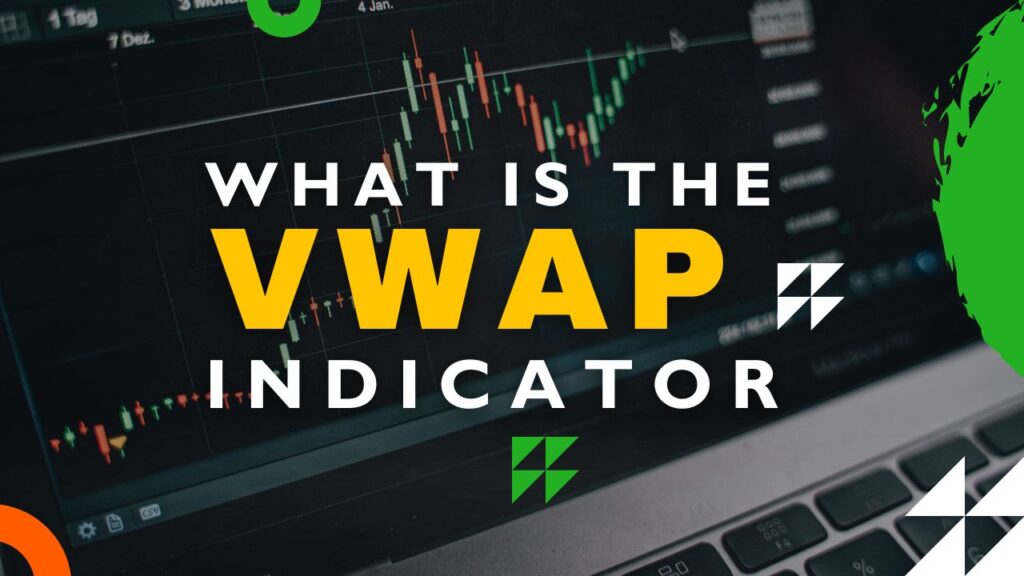
VWAP Indicator – Volume-weighted average Price (VWAP) is just one of these really key things that all day traders and the major players on the market adore. It combines price and volume data to reveal what price the stock has traded at within a period of time, taking into consideration the volume as well. Mastering the art of VWAP and how to implement it on TradingView and the other websites can definitely take trading to the next level, particularly when you’re trying to catch the fast price moves.
In this post, we’ll explore VWAP, how it works, and how an expert can utilize it on TradingView.
💡 What is VWAP?
VWAP stands for Volume Weighted Average Price. It is calculated by adding the price and volume of every trade and then dividing all that by the volume of the trades for a specific timeframe. Here is the formula for VWAP:
VWAP = ∑(Price × Volume) / ∑(Volume)
Where:
- We are interested in knowing the price per data point.
- Volume is essentially the quantity of shares or contracts trading at that price.
So, the VWAP is essentially informing the trader what the day’s average price is for the stock, taking into account the price and the amount traded. The big guys primarily use it to determine whether they’re buying at prices higher or lower than the market average.
📊 How VWAP is Used in Trading
VWAP is very critical to day trading because it informs the trader and determines where the market is going, the resistance and support areas, and how prices are compared to the mean price. That is how most people tend to employ VWAP:
✅ Trend Confirmation:
- If the price is higher than the VWAP, then the market is on an upward trend.
- If the price is below the VWAP, then the market is in a downtrend.
🧱 Support and Resistance Levels
- VWAP can be the dynamic support or resistance level. If the price rises, it tends to act as support, but then turns into resistance when it falls.
- Traders enter trading when prices approach the VWAP levels. If it is bounced off the VWAP, then that may indicate the trend is going to continue.
🔁 Entry and Exit Points:
- So the buying will initiate when the price crosses the VWAP, indicating something good is moving downwards.
- Essentially, short selling is done when the price falls below the VWAP, indicating the bears are dominating.
📉 Volume Check:
- So, VWAP is this volume-weighted thing, right? It just works really well in markets where volume is really important for price movement.
- If there’s a lot of volume and the price breaks above or below the VWAP, it can provide some additional confirmation for those trade signals.
🛠️ How to Use VWAP on TradingView
Okay, so TradingView is a really popular charting platform where traders can view and examine all types of technical indicators, such as VWAP. Here’s the lowdown on using the VWAP indicator on TradingView:
🚀 Step 1: Placing VWAP onto Your Chart
- Go to the TradingView site and log in to your account (or create one if you are new to the game).
- Choose Your Chart: Simply select the market or commodity you’d like to view, such as Forex, Stocks, or Futures. Be sure to view an intraday chart because the VWAP is typically applied to shorter time frame charts (such as 1-minute, 5-minute, or 15-minute charts).
- Add VWAP Indicator:
- Just click on that “Indicators” tab at the top of the screen (it is the one with that small icon for the bar chart and the line).
- Simply type “VWAP” in the search bar.
- Select “Volume Weighted Average Price” from the list of available indicators.
If you do so, you’ll notice the VWAP appears on your chart as one line. Essentially, it is the volume-weighted average price for the period you’ve set (most commonly the entire trading day for intraday charts).
🧪 Step 2: Experimenting with VWAP on TradingView
- Vary the Line Color and Thickness: Simply right-click on the VWAP line and click on “Settings.” You can adjust the color, type, and thickness to help it stand out more.
- Experiment with Various VWAPs: Some find it fun to play around with various VWAPs for various calculations or different timeframes, such as the Anchored VWAP, where you are allowed to choose an arbitrary starting point for the VWAP. Just insert another couple of VWAP indicators and adjust the settings to suit.
- Combine with Other Indicators: Hi, you actually want to combine VWAP with other indicators such as RSI (Relative Strength Index), MACD, or Moving Averages.
For more TradingView tips, check out 👉 tradingviews.blog
📈 Step 3: Implementing VWAP While Trading Live
- Monitor the Crossovers on the VWAP: Watch where the price crosses the line of the VWAP. If the price crosses the line upwards, that’s the signal to buy, and sell when it crosses the line downwards.
- Volume: The VWAP is at its best when there is plenty of trading. Look at the volume bars on the chart. If the price penetrates the VWAP on heavy volume, that is an even better indication of the trend.
- Create Alerts: TradingView allows you to create price alerts for when the price crosses the VWAP line, which is really convenient for monitoring large moves without needing to constantly watch the chart.
🧠 VWAP Strategies for Day Trading
So, day traders tend to combine VWAP with other technical indicators to increase their chances. These are the most common ways to employ VWAP:
🔄 1. VWAP Reversal Strategy
- Buy it when the price reaches the VWAP on an uptrend (or sell it on a downtrend).
- Exit: Bail on the trade when the price reaches the next major resistance or the next major level of support, or when you notice the trend beginning to reverse.
💥 2. VWAP Breakout Strategy
- Conditions: The price has been trading below the VWAP and suddenly breaks above it with significant volume, indicating a potential uptrend.
- Entry: Enter when the price is above the VWAP and volume is increasing.
- Exit: Get out as the price gets nearer to plateauing or reaching an old high.
✅ Advantages of Using VWAP on TradingView
- Real-Time Analysis: TradingView allows you to observe price movements in real-time and indicates to you simultaneously how the price compares to the VWAP.
- You can definitely take a look at the VWAP on higher timeframes to catch an idea of how the price is trending overall.
- You can completely customize the VWAP line on TradingView to fit your trading strategy, which makes it really easy to incorporate into your trading system.
- Hi, so take a look: TradingView has loads of resources that can completely familiarize you with using VWAP. They’ve got tutorials and community scripts, and plenty of traders just waiting to reveal their secrets.
🏁 Conclusion
The VWAP is very useful for day trading since it provides an excellent idea of where the market is going, assists in identifying key resistance and support points, and allows them to get their entries and exits just right. By adding the VWAP to your TradingView charts, you’ll be able to take full advantage of that incredible volume-weighted average price to guide your trading.
Although it’s a relatively simple tool, what makes it useful is the way it displays price and volume information in real time, which assists traders in making more informed decisions. Regardless of whether you’re a newbie or an old-timer, adding VWAP into your mix can provide a clearer picture of the direction the market’s going to go and enhance your prospects of success.



Pingback: Top 5 Intraday Technical Indicators for Consistent Profits 2025 - Trading Views
Pingback: NVIDIA on TradingView 2025: Technical Analysis & Forecast - Trading Views
I consider something really special in this site.
I like the helpful information you supply to your articles. I will bookmark your blog and check again here frequently. I’m quite certain I will learn a lot of new stuff proper right here! Best of luck for the following!
Please let me know if you’re looking for a writer for your weblog. You have some really good articles and I think I would be a good asset. If you ever want to take some of the load off, I’d love to write some articles for your blog in exchange for a link back to mine. Please blast me an email if interested. Kudos!